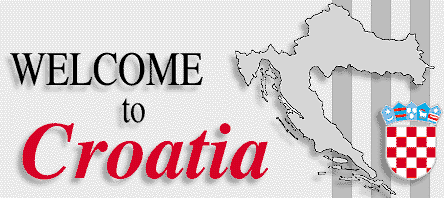| |
Due to its privileged position in the most northerly part
of the Adriatic, the bay of Kvarner is easily accessible from all mediterranean
and mid-european countries. The resorts of this region are the most frequented.
The Kvarner, consisting of some 3300 km2, stretches from the Opatija
Riviera in the northwest to the island of Pag in the south and
encompasses the islands of Krk, Cres, Losinj and Rab.
The climatic conditions are specific to this region. Located at 45°
longitude and 14° latitude this area of the Mediterranean enjoys a
very pleasant climate with hot summers and mild winters. The average annual
temperature is approximately 14°C. During August, the warmest month,
the average temperature is 24°C reducing to approx. 5°C in January.
The difference throughout the year is more than 40°C (-6° to 37°C).
The entire Kvarner bay is mercifully protected from the truly harsh elements
by a mountain range running from Mount Ucka in the north to Gorski Kotar
and Velebit in the east and south. It is largely due to these high mountains
and the Bura wind that blows from them that summer nights are very often
pleasantly refreshing. The Bura is equally guilty of sudden and unpleasant
dramatic drops in temperature during the winter. Three main winds are prevalent
in the bay; you will often hear locals talk of them with predictions of
the following days weather and associated fishing prospects;
Bura, bringing colder but sunny weather.
Yugo, southeasterly wind with warmer but cloudy weather.
Maestral, a refreshing summer sea-breeze.
The proximity of the warm coastal strip to the cool mountain range offers
summer as well as winter sport opportunities - sometimes in the same day!
With more than 2100 hours of sunshine annually in Rijeka, and as
much as 2600 hours blessing Rab, the Kvarner region truly belongs to the
sunny Mediterranean. Snowfall is extremely rare, especially on the islands.
Thus it is not uncommon to find hotels offering free accommodation in the
unlikely event of snowy weather during your stay (a safe gamble on their
part).
The seawater temperature reaches 27°C during the summer months, but
even in winter it seldom falls below 10°C, with an annual average of
approximately 16°C.
The specific geo-topographical position of the bay and its influence upon
climatic conditions also yields an interestingly diverse flora and fauna.
Certain land pockets are even suitable for subtropical plants. Opatija,
for example, snuggling in the foothills of the massive Ucka mountain, enjoys
a protected position. As a result, the surrounding area is drowned in greenery
and sumptuous growth, like nowhere else in Europe; forests of bay trees
(the town of Lovran derives its name from the latin word for bay - lovor);
large chestnut groves and stately palms. In the gardens you will find mandarins,
kiwi, lemons and other citrus fruits. The Parks of Opatija are the
result of a hundred years of attention by residents and visiting sailors,
creating in some an almost tropical atmosphere. Interestingly, Opatija's
emblem is the japanese camellia.
The bay of Kvarner is rich with a variety of fish. Typically there is a
prevalence of blue fish (sardine, mackerel etc.). However a wide variety
of quality white fish may also be found (grouper, hake, bass, skate, etc.).
The waters of the bay are particularly good hunting grounds for squid and
octopus which no doubt you will see on the tables of coastal restaurants
in abundance - delicious! |






|









